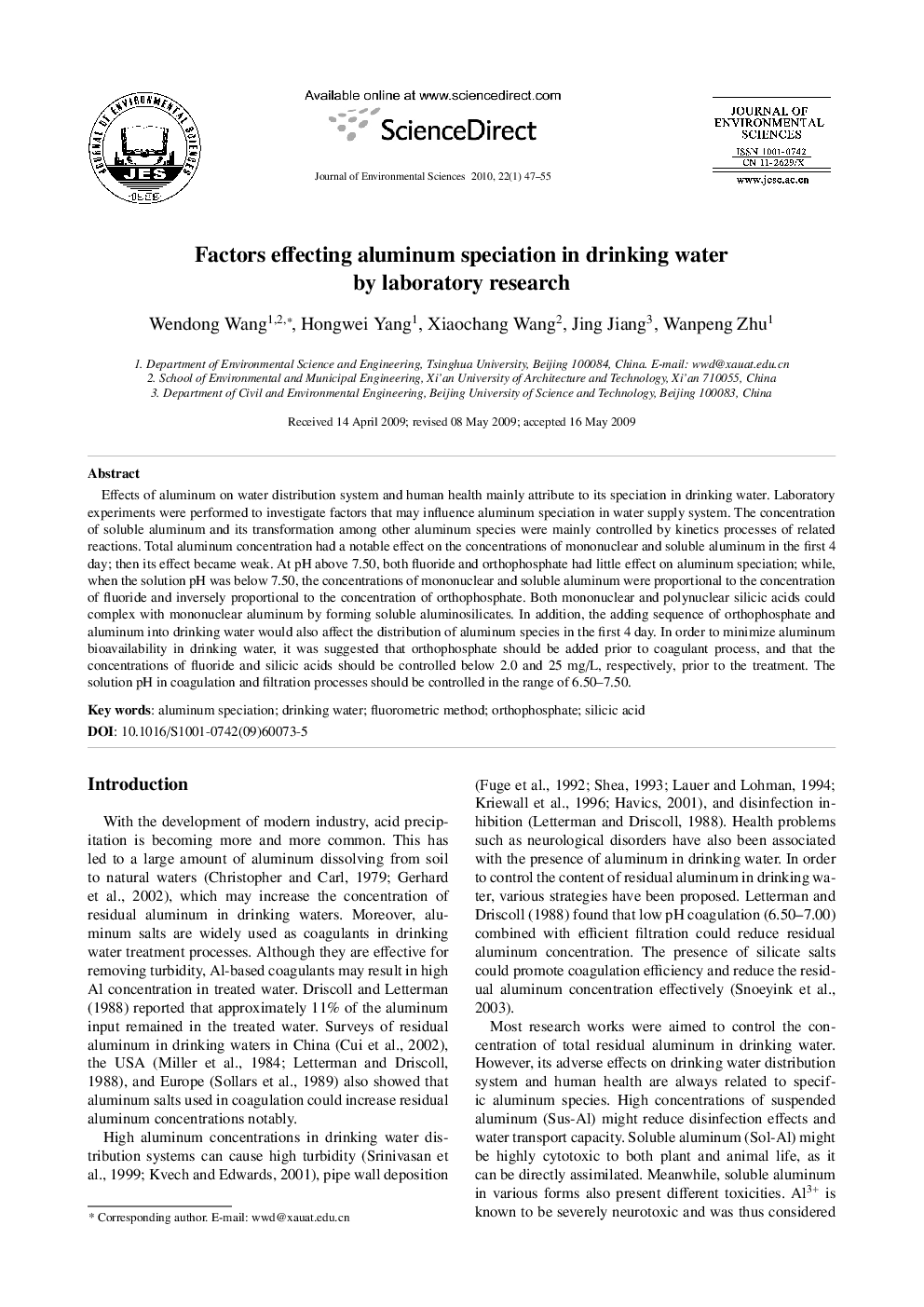| کد مقاله | کد نشریه | سال انتشار | مقاله انگلیسی | نسخه تمام متن |
|---|---|---|---|---|
| 4455238 | 1312510 | 2010 | 9 صفحه PDF | دانلود رایگان |

Effects of aluminum on water distribution system and human health mainly attribute to its speciation in drinking water. Laboratory experiments were performed to investigate factors that may influence aluminum speciation in water supply system. The concentration of soluble aluminum and its transformation among other aluminum species were mainly controlled by kinetics processes of related reactions. Total aluminum concentration had a notable effect on the concentrations of mononuclear and soluble aluminum in the first 4 day; then its effect became weak. At pH above 7.50, both fluoride and orthophosphate had little effect on aluminum speciation; while, when the solution pH was below 7.50, the concentrations of mononuclear and soluble aluminum were proportional to the concentration of fluoride and inversely proportional to the concentration of orthophosphate. Both mononuclear and polynuclear silicic acids could complex with mononuclear aluminum by forming soluble aluminosilicates. In addition, the adding sequence of orthophosphate and aluminum into drinking water would also affect the distribution of aluminum species in the first 4 day. In order to minimize aluminum bioavailability in drinking water, it was suggested that orthophosphate should be added prior to coagulant process, and that the concentrations of fluoride and silicic acids should be controlled below 2.0 and 25 mg/L, respectively, prior to the treatment. The solution pH in coagulation and filtration processes should be controlled in the range of 6.50–7.50.
Journal: Journal of Environmental Sciences - Volume 22, Issue 1, January 2010, Pages 47-55